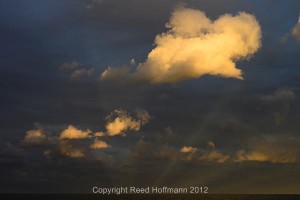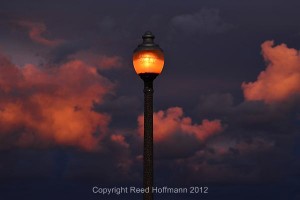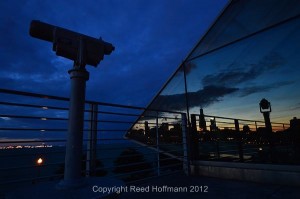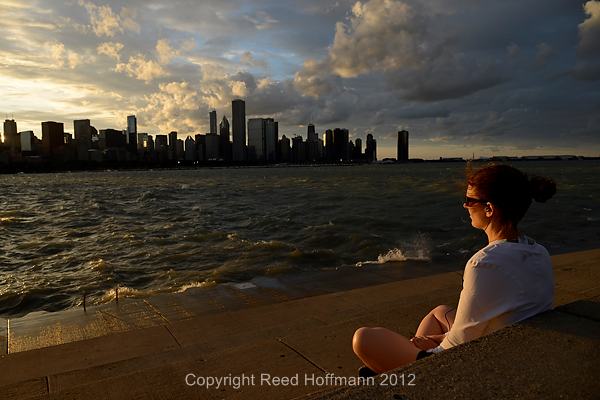One of the best tips I ever got when getting started in photography was, “always look behind you.” And it wasn’t for safety. As we walk around looking for photos, we’re always scanning ahead and around us for that nice shot. But understanding the importance of light, we also have to realize that seeing something from one side may be an entirely different visual experience than seeing it from the other side.
This idea was reinforced recently while teaching a workshop in Chicago. I was with about 20 people leading a Mentor Series Trek, and as part of the itinerary we’d gone to the planetarium for sunset. Built on a finger of land jutting into Lake Michigan, it has a great view back toward the city’s skyline. And that’s why we were

Turning around, we saw the great light on the clouds and started working with that. Nikon D800, ISO 400, 1/500, 5.6, 0.0 EV, 48mm. Photo copyright Reed Hoffmann.
there at the end of the day – to shoot the skyline as the sun set and the city lights came on.
It was late afternoon when we arrived, and the scene was just as expected – a good view of the city. It was also very windy, with big waves crashing into the walls, so that grabbed our attention immediately. But after a while of working on that, I turned around to see what was behind us. And that’s when things got interesting.
The sky had those beautiful puffy white clouds I love in pictures. And the fading sun was painting them with great color. So I pointed that out to the folks around me, and we started shooting them. And immediately playing with our exposure (-EV, or minus exposure compensation) to make those shots darker and more dramatic. The next step was to say, “what can I shoot that’s more

The clouds alone weren’t enough, but adding this old light to the foreground added a nice touch. Nikon D3200, ISO 400, 1/320, 5, -0.7 EV, 85mm. Photo copyright Reed Hoffmann.
than just clouds?” Fortunately, there were beautiful old light poles around the planetarium, and they were lit, so we could shoot them against the sky. And that kept us busy until the sky was getting too dark to shoot. Then we turned back to the skyline.
The wind made it hard to shoot the night skyline, because it was so gusty that even on tripods, it was hard to get a steady shot. So after fighting that for a bit, I looked behind me again. And saw the windows of the planetarium reflecting what was left of the evening sky. As an added bonus, when I went over to investigate, I found that area was somewhat shielded from the wind. First I tried shooting just the reflection, but that was confusing and didn’t have much impact. So I backed up, and tried including some of the surrounding scene. And that made a more interesting picture.
Yes, the skyline was beautiful, and the location was great. But, as

This ended up being my favorite shot of the night, taking advantage of a reflection off a planetarium window.
Nikon D3200, ISO 200, 1/3, 4.5, -1.0 EV, 15mm. Photo copyright Reed Hoffmann.
often happens in photography, what we went there to shoot wasn’t the only picture to be made. Try to be open-minded when out shooting, and always remember to look behind you.

